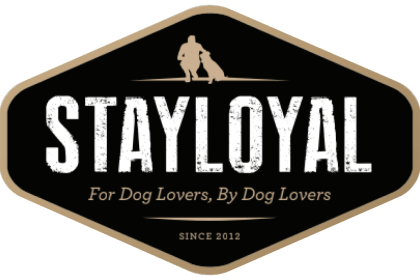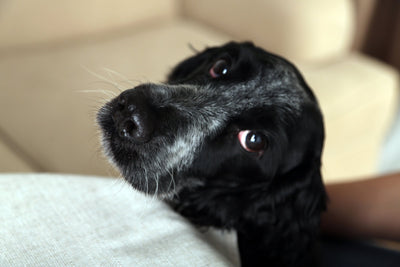Is the Dachshund the Dog for You?

There are few breeds as recognisable as the Dachshund. Even non-dog people know a "sausage dog" when they see one. That long back and short legs give them away every time. Coming in two sizes (miniature and standard) and three coat types (smooth, wire and long), and many colour combinations including the popular dapple and striking blonde, the Doxie offers something for everyone. But do you have the right home to offer a Dachshund? If you are thinking about adding one to your family, check out these facts and then decide if the Dachshund is the dog for you.
Breed History
As one would expect by the name, the Dachshund was developed in Germany. The name means "badger hound" and points to what they were developed for – namely hunting animals, such as the badger, that borrow underground. First developed over 600 years ago, the breed has not changed much since then. The short legs with large thick claws are perfect for digging into holes, the long back meant they could fit into a burrow easily. And that bigger-than-they-are bark made sure their owners could hear them even if they were feet underground. The miniature size was developed for hunting smaller underground vermin, and packs were used to hunt wild boars. An interesting fact, the nickname “sausage dog” was started in the United States after WWII, because of biased against anything German.
Today, the standard sized Dachshund weighs between 7 and 14kg and the miniatures are usually under 5kg.
Temperament
As one may expect of a small dog that was expected to hunt animals sometimes twice their size the Dachshund has a brave and fierce personality. And while most Doxies are house pets today, they still retain that hunting instinct and therefore are big chasers. And that loud bark we mentioned? They tend to like to use it…a LOT. Doxies can be very vocal.
Often working alone in tunnels, the Doxie was bred to use that high intelligence independently, so often owners think of them as stubborn. They are very loyal, however, and make good guard dogs. This also means they can be wary when meeting new people. Many are not big fans of other dogs, preferring to be with their humans.
Energy Level
With their short legs, Dachshunds are no marathon runners. You don’t have to worry about jogging several miles a day to keep yours in shape. That being said, Doxies do still have a medium energy level and need mental and physical stimulation every day, preferably something involving chase, such as fetch, to satisfy their hunting drive. Due to their long back, owners should be careful about doing any activity that involves jumping, such as agility.
An important note: Exercise for the Dachshund is extremely important to keep their muscles strong to support their long back and spine, and to keep them from getting overweight. Too much weight also puts a strain on their back and short legs. A Doxie should never be a "couch potato". (This also means to watch how much they eat and avoid over treating!)
Space Needed
Being a smaller dog, especially the very popular miniatures, Dachshunds don’t need a lot of space and make a fine apartment dog for that reason…as long you have a way to get that daily exercise in with a walk or nearby off-leash park. Their lower stature means you don’t have to worry about them getting onto counters or knocking things over in tight spaces, a plus for tiny urban living.
Common Health Problems
It’s probably no surprise that the long back of the Dachshund is the main source of health problems for the breed. Herniated, slipped and ruptured discs and torn ligaments are common injuries seen in Dachshunds, usually due to falls or jumping up or down. Dachshunds should not jump onto furniture or off it, and owners should be careful with them going up and down stairs as well. Such injuries can cause paralysis or affect the dog’s ability to urinate/defecate.
Their long ears do need to be cleaned regularly to avoid infection, just like any "droopy" eared breed. Some do have skin allergies, so if your Doxie is super itchy or has a rash, you may want to get him tested for allergens. Both of these are minor issues that do not affect your dog’s lifespan and are fairly easy to maintain.
More serious, like all deep-chested breeds, they are more prone to bloat, so making sure your Doxie is not gulping their food down is a good idea. Things to ask breeders about are epilepsy, eye disorders and diabetes, as they are genetic diseases Dachshunds carry. Also, breeders should not breed two dapple dogs together, as the puppies can be deaf.
Training
Training a Dachshund is a challenging but rewarding experience. They are highly intelligent but also independent, so they are going to want to know "why" they should do something before doing it. Positive-reinforcement based methods work best, because the Doxie is then working for something (the reward) and it tends to make them a more willing partner. Use their hunting instinct to your advantage – most would do just about anything to get you to toss a ball for them to chase! But that hunting instinct also means that if they get distracted by a scent or the sight of something, they will most likely ignore you. A key to getting a good foundation is to start our training in an area with little to no distractions until you and your Doxie have a good working relationship where you are the thing he wants to focus on.
Feeding Recommendation
We recommend that you feed your Dachshund puppy Stay Loyal’s Salmon, Turkey & Pork Formula, following the puppy feeding guidelines. At eight months, you can switch to the adult feeding recommendations of Salmon, Turkey, & Pork.
If you think a Dachshund is a great fit for your home, talk with breeders, ask them about testing for epilepsy and eye disorders and whether any breeding dogs or past puppies have developed diabetes. Taking time while selecting your puppy will ensure you and your new best friend will have a long, happy life together.








